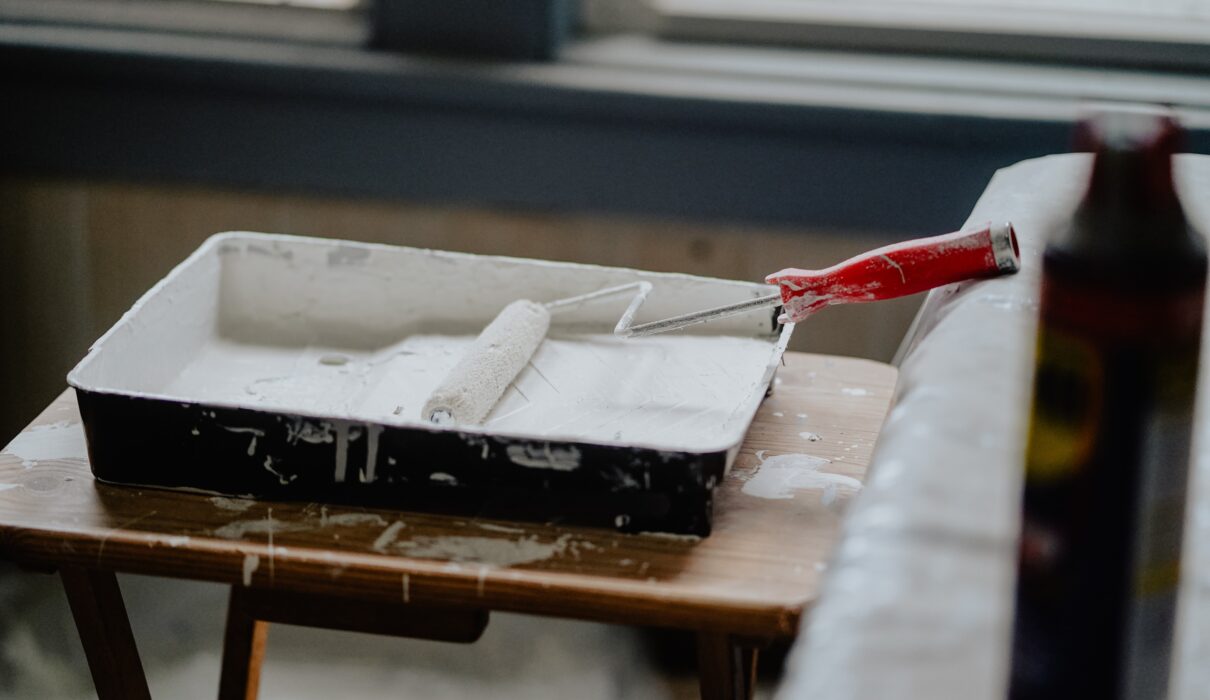A home improvement project can help improve your surroundings and, arguably, your quality of life. According to HomeAdvisor, the average cost of home renovations and remodels is $46,713, so it is understandable that many people look to home improvement loans to help fund these sorts of ventures.
Before you apply for one though, you’ll need to determine which type of loan is the best for you and your needs. Here, we outline what’s needed in order to obtain a home improvement loan, and what options are out there.
Step 1: Gather Your Information
Most home improvement loans require good credit in order to qualify, so the first thing you’ll want to do is check your credit score. There are many free, accessible options available that you can use to check your stats without negatively impacting your score. FICO considers a “good” score to be 670 or higher.
Additionally, you’ll need to provide documents that verify your income, such as a W2 and pay stubs, or recent tax returns and bank statements if you’re self-employed.
Lenders will also want to see your debt-to-income ratio, or DTI, stays at 43% or lower.
Step 2: Determine Which Type Of Financing You’d Like To Pursue
One of the most common ways that people typically finance their home improvements is through a home equity loan or a home equity line of credit (HELOC). These options are tailored towards homeowners who have at least 20% equity in their homes, so you’ll need a new appraisal to determine your home’s current value and how much equity you’ve gained.
Here is a breakdown of these options:
- Home equity line of credit: HELOCS typically start out lower than the fixed rate you might get with a home equity loan, but over time the variable rate can increase and potentially cost you more in the long run. So, since these usually get more expensive over time, HELOCs are best for people who plan to pay off their debt relatively quickly.
- Home equity loan: These provide you with the full loan amount upfront and a fixed interest rate (typically between five and 30 years). Since the interest rates stay fixed for the entire duration of the loan, these are best for people who plan to pay off their balance over a longer period of time. Home equity loans are also a good choice for homeowners who have just one home improvement project and don’t need to revolve a balance, like with a HELOC.
Keep in mind that, much like your first mortgage, these loans are secured by your home, so if you do not make repayments, your lender can foreclose and force you to sell your home. If you’d rather not dabble in something so high-stakes, you may want to consider the alternatives which include: cash-out refinancing and personal loans.
- Cash-out refinancing: Rather than taking on a second loan, a cash-out refinance will refinance your existing mortgage and essentially cut you a check for the amount you want to cash out. Your new loan will include the initial mortgage balance plus the cash-out amount and any closing costs you might have rolled into the loan. A cash-out refinance gives you the opportunity to finance your home improvement project over a long period of time. And if mortgage rates have dropped since you first bought the house, you may also be able to get a lower rate on your debt overall. The main downside to a cash-out refinance is that you’ll pay closing costs on the full loan amount instead of just the cash-out amount. With a home equity loan or HELOC, closing costs only apply to the funds needed for your renovation.
- Personal loan: Much like the name implies, personal loans can be used for many things, including home improvement projects. With this option, you don’t need to have a specific amount of equity in your home to qualify for a personal loan, and if your credit is fair or better, you may be able to qualify for a decent interest rate. However, unsecured loans typically have higher interest rates than secured loans. Keep in mind that personal loans typically have much shorter repayment periods than the aforementioned options (think between 1-7 years).
Consider all of the different financing options and determine which of them best fits your needs, and your ability to pay off the debt. Taking out a loan always comes with potential risk, so be sure to give this a good deal of thought and take your time to shop around and find the best deal. It’s a good idea to start with your existing lender and see what kind of rates they can offer you.
Step 3: Decide If Financing Your Project Is The Best Bet
If you’re already considering financing your home improvement project, you’ve probably already thought about whether it’s the best course of action for you to take in the first place.
But if this isn’t something you’ve quite thought about yet, take the time to consider whether or not you should borrow money, or if there are other avenues you can take for this particular venture. Say you only need a few thousand dollars for your project and you have a good cash flow — in your particular case it might be best to save up and avoid new debt.
Whatever you choose, don’t rush yourself and take the time to consider all of your options, and pick the best one for you.

